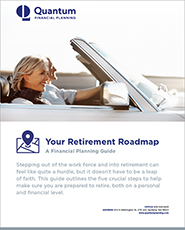Over the past few years, a handful of changes have been made to the IRS-mandated required minimum distribution (RMD) rules. For those uninformed, they run the risk of being out of compliance with the IRS. This article examines the recent rule updates, as well as the overarching guidelines.
When Are RMDs Required?
RMDs now apply to individuals 73 or older, and they must be fulfilled by the end of each calendar year. However, on the year you turn 73—since it is your first attempt at meeting the requirement—the IRS extends you a grace period until April 1 of the following year.
If you fail to withdraw the full amount of your RMD, the amount not withdrawn is subject to tax. The penalty starts at a 10% tax if the error is corrected within two years, but it jumps to 25% if it is corrected thereafter. Depending on the year-end value of your account, this may turn out to be a hefty sum! To document the oversight with the IRS, you will need to file an additional tax form along with your standard federal tax return for the year in which you missed the RMD.
How Are RMDs Calculated?
Your RMD is not a stagnant number; it will change every year based on your year-end account values. Armed with that information, you will need to calculate your RMD annually by applying the year’s IRS Uniform Lifetime divisor. This information can be found on the IRS Required Minimum Distribution FAQ page.
Not All accounts Require an RMD
Here is a piece of good news: RMDs apply only to non-Roth qualified accounts. Examples include a traditional or rollover IRA, a 401(k), a 403(b), and most other employer-sponsored retirement plans.
Individuals who do not own these types of accounts are free and clear to disregard RMDs altogether, no matter their age.
If you are not sure whether one of your accounts falls under the RMD rules, it would be wise to reach out to your financial planner for guidance. Our Spokane, WA financial advisory firm helps clients determine RMDs as part of their retirement income plan.
A caveat for inherited retirement accounts: If you have a retirement account that you received as an inheritance, you may need to take an RMD from it. However, it will depend on certain factors; for example, if you are the original owner’s spouse, the rules may be different compared with a non-spouse heir. Here again, consulting with your financial planner is key.
Optimizing Your RMD
Although RMDs are an obligatory fact of life for most IRA owners, there are still ways to make the most of the situation. By considering the implications of RMDs ahead of time, you can employ some beneficial financial planning strategies to help make RMDs work more for you.
Plan for taxes: Your RMD will be taxed as ordinary income at the federal and state levels. Instead of taking the gross amount of the RMD as a distribution to you, therefore, it may make sense to withhold a portion of it for taxes (typically a percentage corresponding to your tax bracket). You can work with your account custodian to arrange this when making the distribution request.
Moreover, if you expect a higher-than-usual tax bill for any reason, you can consider your RMD as a means for covering the bill. Instead of withholding a certain percentage, as stated in the scenario above, you would simply ask the account custodian to make a redemption of a specific dollar amount and send the proceeds directly to the IRS. Of course, if any amount of the RMD still remains, you could then take the remainder as income.
Qualified charitable distributions: If you are charitably inclined, you can use your RMD to make charitable donations on a tax-free basis. This is made possible through the IRS qualified charitable distributions (QCD) rule, which actually can be utilized as early as age 70.5.
The rule stipulates that a distribution made from a qualified account to a charitable organization is tax-exempt if the distribution is made payable directly to the qualified charity. (This is limited, however, to a maximum annual amount of $100,000 per year.)
While there are clear benefits to utilizing this provision as soon as you turn 70.5, it is even more worthwhile to consider after age 73 when RMDs are enforced. Since money is required to leave the account either way, you might as well take the opportunity to support a charitable cause and reduce your tax bill in one fell swoop.
Alternatives to income: Some account owners will find they don’t necessarily need the RMD as personal income. Although a simple concept, it’s important in these scenarios to remember you are not required to redeem the funds to your bank account for spending. You can alternatively transfer the funds into a non-qualified brokerage account. This way, the money can continue working for you by staying invested.
Still Working?
If you are over age 73 and still employed, the employer-sponsored retirement plan associated with your job is not subject to the RMD rule. This may prove valuable if the plan allows for incoming rollovers; you may have the option to consolidate other RMD-subject retirement accounts into your current employer’s plan, thereby reducing your RMD responsibility even further.
It should be noted that this caveat for an RMD deferral will apply to only those working for the entirety of the calendar year and who do not own more than 5% of the business.
Conclusion
While the task of calculating your RMD every year can be tiresome, it is nevertheless an important obligation not to take lightly. However, by applying a little effort and perhaps coordinating with your financial planner, you can create an efficient personal system for staying on top of these annually that also helps you maximize your financial plan.
Schedule a complimentary insight meeting to discuss your situation and how we may be able to help.



